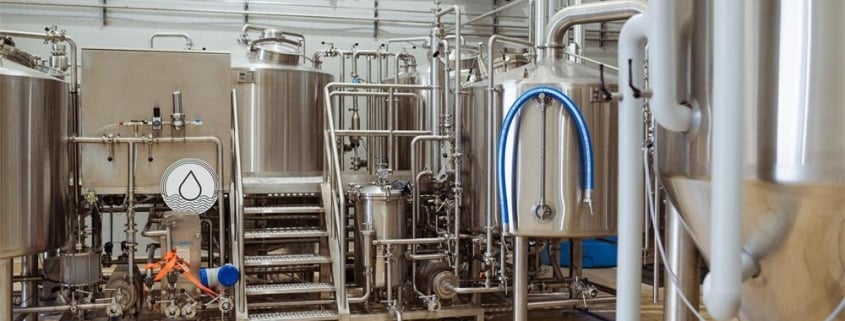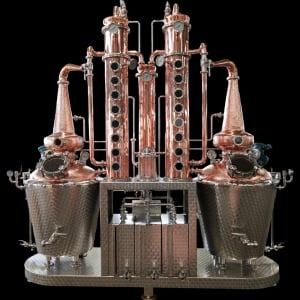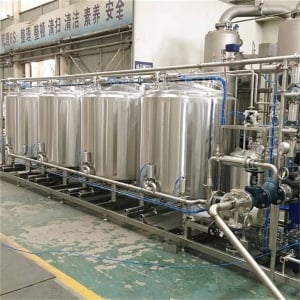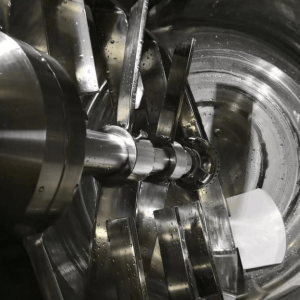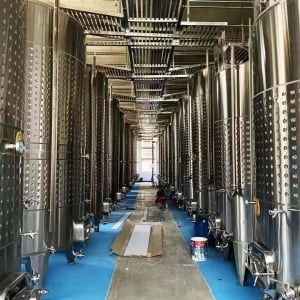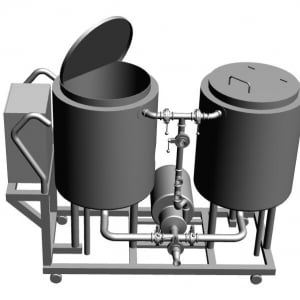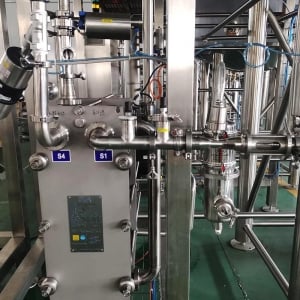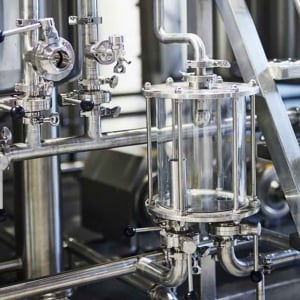Nano Brewery Equipment for Sale
If you’ve ever dreamt of starting your own brewery but felt overwhelmed by the complexities, you’re not alone. Nano breweries offer a perfect entry point into the world of beer brewing, combining creativity, craftsmanship, and a manageable scale. Whether you’re an aspiring brewmaster or a seasoned brewer looking to downsize, the right nano brewery equipment can make all the difference. In this comprehensive guide, we’ll walk you through everything you need to know about nano brewery equipment for sale, including types of equipment, brewing processes, space considerations, suppliers, costs, and much more.
Overview: Why Choose a Nano Brewery?
Before diving into the specifics, let’s explore why nano breweries have become so popular. Unlike large-scale operations, a nano brewery operates on a smaller scale, typically producing 3 barrels or less per batch. This makes it a fantastic option for hobbyists, small business owners, and local community brewers who want to experiment with unique recipes without the financial burden of a larger brewery.
Nano breweries are also more flexible, allowing you to quickly adapt to market trends, experiment with new flavors, and build a loyal customer base. Plus, they require less space, making them suitable for urban environments or even home setups.
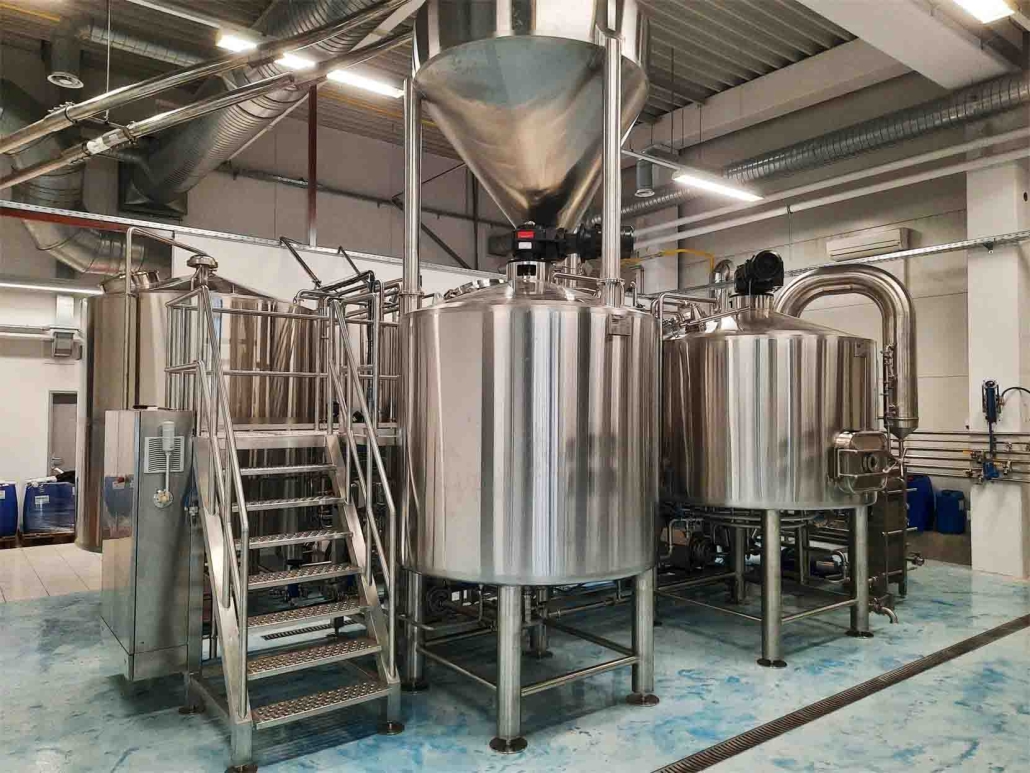
The Essential Nano Brewery Equipment Guide
Setting up a nano brewery requires a keen understanding of the equipment you’ll need. While the specific needs will vary depending on your goals and space, the following guide will cover the core components every nano brewery should consider.
1. Brewing System Components
A nano brewery’s heart lies in its brewing system. This system typically includes a mash tun, lauter tun, brew kettle, hot liquor tank, and fermenters. Here’s a closer look:
- Mash Tun: This is where the mashing process occurs, converting starches into sugars. Stainless steel is the preferred material for its durability and heat retention.
- Lauter Tun: After mashing, the mixture is transferred to the lauter tun, where the wort (liquid) is separated from the grain. Precision is key here to ensure clear wort extraction.
- Brew Kettle: The wort is boiled in the brew kettle, where hops are added. Look for kettles with good insulation and a whirlpool system for better hop utilization.
- Hot Liquor Tank: This tank holds hot water, essential for the brewing process, including sparging and cleaning.
- Fermenters: Fermenters come in various sizes and shapes, but for a nano brewery, conical fermenters are a popular choice due to their ease of use and efficient yeast harvesting.
Each component should be chosen based on your brewing capacity and available space. High-quality stainless steel equipment is recommended for its longevity and ease of cleaning.
Types of Nano Brewery Equipment
To better understand what you’ll need, let’s break down the different types of nano brewery equipment available. This will help you make informed decisions when purchasing.
| Equipment Type | Description | Key Features | Materials |
|---|---|---|---|
| Mash Tun | Vessel for mashing grains to extract fermentable sugars | Insulation, false bottom, thermometer | Stainless steel |
| Lauter Tun | Separates wort from grain after mashing | False bottom, sparging system | Stainless steel |
| Brew Kettle | Boils wort and adds hops | Whirlpool, temperature control, insulation | Stainless steel |
| Hot Liquor Tank | Stores hot water for brewing and cleaning | Temperature control, insulation | Stainless steel |
| Fermenters | Containers where wort ferments into beer | Conical shape, cooling jacket, pressure relief valve | Stainless steel |
| Brite Tanks | Used for secondary fermentation, carbonation, and conditioning | Pressure rated, cooling jacket, sight glass | Stainless steel |
| Heat Exchanger | Cools wort quickly after boiling, prior to fermentation | Plate or tube type, high efficiency | Stainless steel |
| Pumps | Circulates liquid between different brewery vessels | Variable speed, sanitary design, easy to clean | Stainless steel |
| Kegging System | Packages finished beer into kegs | CO2 tank, regulator, keg filler | Stainless steel |
| Cleaning System | Essential for maintaining hygiene and quality | CIP (Clean-In-Place) system, pumps, chemical storage | Stainless steel |
Brewing Process: From Grain to Glass
Brewing beer is both an art and a science. While the equipment is vital, understanding the brewing process is equally important. Below is an overview of the steps involved in brewing beer at a nano brewery.
1. Milling
The brewing process begins with milling the grains. The goal is to crack the grain to expose the starches without turning it into flour. A consistent grind ensures efficient extraction during mashing.
2. Mashing
Mashing is the process where milled grains are mixed with hot water in the mash tun. The heat activates enzymes in the grain, converting starches into fermentable sugars. This stage is crucial for determining the beer’s flavor, color, and body.
3. Lautering
After mashing, the mixture (now called the mash) is transferred to the lauter tun. Here, the liquid wort is separated from the solid grain husks. The wort is then rinsed with additional hot water in a process called sparging to extract as much sugar as possible.
4. Boiling
The wort is transferred to the brew kettle for boiling. This step sterilizes the wort and allows for the addition of hops, which contribute bitterness, flavor, and aroma to the beer. The length of the boil can affect the beer’s final characteristics.
5. Cooling
After boiling, the wort needs to be rapidly cooled to a temperature suitable for fermentation. This is where the heat exchanger comes in, using cold water to cool the wort as it passes through.
6. Fermentation
The cooled wort is then transferred to fermenters, where yeast is added. The yeast consumes the sugars, producing alcohol and carbon dioxide. The fermentation process can take anywhere from a few days to several weeks, depending on the beer style.
7. Conditioning and Carbonation
Once fermentation is complete, the beer is conditioned, either in the fermenter or in a separate brite tank. During this phase, the beer develops its final flavor and clarity. Carbonation can be added either naturally or by force carbonating with CO2.
8. Packaging
Finally, the beer is packaged for distribution. In a nano brewery, kegging is the most common method, though some may choose to bottle or can their beer.
Nano Brewery Design and Layout Considerations
Designing the layout of your nano brewery is crucial for efficiency and ease of operation. Here are some factors to consider:
| Consideration | Description |
|---|---|
| Space Requirements | Nano breweries typically need 300-500 square feet. Consider ceiling height and ventilation. |
| Flow of Operations | Ensure a logical flow from milling to packaging, with minimal cross-contamination risks. |
| Utility Access | Reliable access to water, electricity, and drainage is essential for brewing operations. |
| Customizations | Customized setups may be necessary for unique brewing methods or limited space. |
| Aesthetic Appeal | If the brewery is open to the public, consider the visual appeal of your setup. |
Choosing the Right Supplier: What to Look For
When purchasing nano brewery equipment, choosing the right supplier is as important as selecting the right equipment. Here’s a guide to help you navigate the selection process:
| Factor | What to Look For |
|---|---|
| Reputation | Look for suppliers with positive reviews and a proven track record in the industry. |
| Customization Options | Some suppliers offer customizable solutions to fit your specific needs. |
| Price Range | Compare prices across different suppliers, but be cautious of low prices that may indicate inferior quality. |
| Support and Warranty | Ensure the supplier offers robust customer support and a solid warranty on their equipment. |
| Delivery and Installation | Some suppliers offer delivery and installation services, which can save time and hassle. |
Cost Considerations: Budgeting for Your Nano Brewery
Starting a nano brewery involves several costs beyond just the equipment. Below is a breakdown of typical expenses:
| Cost Category | Estimated Price Range |
|---|---|
| Brewing Equipment | $50,000 – $150,000 depending on size and customization |
| Installation | $5,000 – $15,000 depending on complexity |
| Facility Rent/Lease | $1,000 – $5,000 per month depending on location |
| Licensing and Permits | $1,000 – $10,000 depending on region |
| Raw Materials (Grains, Hops, Yeast) | $500 – $2,000 per batch depending on beer style and quantity |
| Utilities | $500 – $2,000 per month depending on size of operations |
| Marketing and Branding | $2,000 – $10,000 depending on the scope of the campaign |
| Miscellaneous Costs | $2,000 – $5,000 (e.g., cleaning supplies, maintenance, small tools) |
Installation, Operation, and Maintenance
Brewery Running Smoothly
Proper installation and maintenance are critical for the long-term success of your nano brewery. Here’s what you need to know:
| Category | Details |
|---|---|
| Installation | Ensure professional installation of all brewing equipment to avoid operational issues later. |
| Operation | Training is crucial. Understanding each component’s function and operation ensures smooth brewing processes. |
| Maintenance | Regular cleaning, checking seals, monitoring temperatures, and inspecting for wear and tear are essential. Routine servicing by professionals can prevent costly repairs. |
How to Choose the Best Nano Brewery Equipment Supplier
Selecting the right supplier is vital to your brewery’s success. Here’s a step-by-step guide to making the best choice:
| Step | Description |
|---|---|
| Research | Start with online research to identify potential suppliers. Look for reviews and testimonials. |
| Ask for Recommendations | Consult industry peers for supplier recommendations based on their experiences. |
| Evaluate Product Range | Assess whether the supplier offers the specific equipment you need, including any customization options. |
| Request Quotes | Contact multiple suppliers to get detailed quotes and compare prices, including shipping and installation costs. |
| Check Customer Support | Test the responsiveness and helpfulness of the supplier’s customer service. |
| Visit Showrooms or Facilities | If possible, visit the supplier’s showroom or a facility using their equipment to assess quality firsthand. |
Advantages and Disadvantages of Nano Brewery Equipment
Understanding the pros and cons of nano brewery equipment will help you make informed decisions. Here’s a comparison:
| Advantages | Disadvantages |
|---|---|
| Lower Initial Investment: Nano breweries require less capital than larger breweries, making them accessible to more people. | Limited Production Capacity: The small scale means lower output, which might not meet high demand. |
| Flexibility: You can easily experiment with different beer styles and recipes without risking large quantities. | Scalability Issues: Expanding production may require significant investment in new equipment. |
| Easier to Operate and Maintain: Smaller systems are generally simpler to manage and less prone to issues. | Higher Per-Unit Costs: The cost per barrel is typically higher compared to larger operations. |
| Quicker Setup Time: Setting up a nano brewery is faster and less complicated than larger breweries. | Space Constraints: Limited space can restrict the types of equipment you can install. |
| Community Appeal: Nano breweries often have a strong local following and can build a loyal customer base. | Profit Margins: Lower production volumes can mean thinner profit margins, especially when starting out. |

FAQs
To wrap up, let’s address some common questions people have when considering nano brewery equipment.
| Question | Answer |
|---|---|
| What is the ideal size for a nano brewery? | A typical nano brewery produces 3 barrels or less per batch. However, size can vary based on your goals and space. |
| How much space do I need for a nano brewery? | You’ll need at least 300-500 square feet, but this can vary depending on your specific setup and equipment. |
| Is stainless steel necessary for all equipment? | While not mandatory, stainless steel is highly recommended for its durability, cleanliness, and longevity. |
| How much does it cost to start a nano brewery? | The total cost can range from $100,000 to $500,000, depending on equipment, location, and other factors. |
| Can I brew different styles of beer with the same equipment? | Yes, nano brewery equipment is versatile, allowing you to brew a variety of beer styles. |
| How long does it take to set up a nano brewery? | Installation and setup can take several weeks to a few months, depending on complexity and equipment availability. |
Conclusion
Nano brewing offers an exciting opportunity to dive into the world of beer making with manageable risks and costs. Whether you’re passionate about crafting unique brews or looking to start a small, community-focused business, a nano brewery can be an excellent choice. By understanding the equipment, process, and costs involved, you can make informed decisions that will set your brewery up for success.
In the end, it’s all about finding the right balance between creativity and practicality. With the right equipment, planning, and dedication, your nano brewery could be the start of something truly special.

